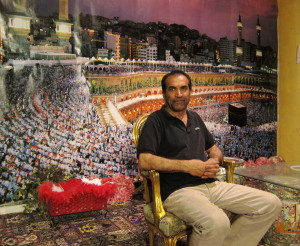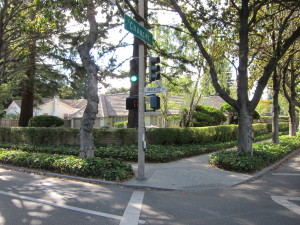By Sharon Simonson
SAN JOSE and PALO ALTO—As San Francisco and Silicon Valley lead California job growth, Bay Area economic recovery remains irregular. San Francisco and the South Bay have regained their 2007 peak employment—but not their dot-com peaks—while the East Bay, Oakland and Marin County have only begun to recover from the financial crisis, according to Palo Alto’s Center for Continuing Study of the California Economy and state data.
Thirteen years after the dot-com boom, at not quite $91,000 a year, Santa Clara County’s median household income remained 11 percent below what it was in 1999, while 7 percent fewer households, or more than 12,000, earned above $150,000 a year, according to the most current Census Bureau data. San Francisco has 13,000 fewer employed residents today than at its peak of 480,200 jobs in December 2000. Silicon Valley has 56,400 fewer employed than at its dot-com high of 879,500, according to the state.
Iranian immigrant Hassan Dastgah has lived Silicon Valley’s vicissitudes. The 68-year-old engineer bought the Art Deco-style Burbank Theater across from San Jose City College in 1999. He built a television studio inside to create English-, Farsi-, Urdu- and Arabic-language news and programming to distribute via satellite. “I wanted to show the Iranians how good the Americans are. I wanted to show that this country is a very good country and that you can become a millionaire or get a doctorate,” he said.

He paid $1.3 million for the 55,500-square-foot theater and adjoining retail space. He liked the theater’s high ceilings and the seating capacity for 100 people. The building also fronts Interstate 280 and has an era-invoking marquee, which stands above the rooftops of the surrounding neighborhood. “At the time, $1.3 million was cheap, and the location is good,” he said. “Everybody knows the building.”
His plans collapsed in the mid-2000s after the Iranian government refused to permit him to gather news there. He has struggled to find tenants, hampered by limited parking and government agreements that trigger the property’s annexation into the city of San Jose with certain uses. The neighborhood’s sinking median household income hasn’t helped: At $38,200 in 2012, it was 31 percent below what it was in 1999, adjusted for inflation.
Within Santa Clara County, incomes have inched beyond their 1999 boom-time highs in a few places in cities such as Mountain View, Santa Clara and Los Altos. Median household income has jumped more than 11 percent, to $211,565, in the leafy and opulent Palo Alto neighborhood that hugs University Avenue at that city’s northeastern edge. Silicon Valley’s household median also compares to $51,371 nationally and $61,400 in California.

The Census Bureau uses median household income as a measure because, unlike average and per capita incomes, medians eliminate the outlier effect, a bureau spokesperson said. That’s when a number that is widely different from the rest in a dataset skews an outcome. In a list of rank-ordered numbers such as 1, 2, 3, 4, 5, 6, and 100, the median is the middle number, 4. The average of the same list is 17.
The bureau tries to have approximately 4,000 residents in each census tract, though populations can vary widely—from lows near 1,200 to highs of 8,000, according to the bureau’s website. Boundaries are set based on “identifiable” physical or legal features, such as major roadways and political subdivisions like city and county lines. Census tracts are intended to be relatively permanent, so findings can be compared across years. The Census Bureau is scheduled to release in mid-September its 2013 American Community Survey results with the most current income figures for communities larger than 65,000 people. The American Community Survey is annual, involves smaller groups of households and is part of the bureau’s decennial census program.
Winners, Losers and Big Losers
But in Cupertino neighborhoods proximate to the existing Apple Inc. headquarters and the new Norman Foster-designed giant hoop, median household incomes, though typically above $100,000, often are still below what they were in 1999.
Incomes are down, often by 20 percent or more, in 19 census tracts of 24 that constitute central San Jose: the downtown, Midtown and Burbank neighborhoods. Together the 24 tracts are home to more than 116,000 people. Including East San Jose, downtown, Midtown and Burbank have the lowest incomes in the county with household medians in some census tracts of less than $30,000 a year.
Downtown San Jose resident and merchant Kymberli Brady says the years since 2010 have tested her resilience. That year, the former news photographer and writer lost a full-time job. “I have been struggling since,” she said. “I think a lot of people my age are struggling in jobs they don’t love or are not using their skills.” Brady is 55-years-0ld.
Brady has been nothing if not creative in making her way. She owns and operates Discover San Jose in 763 square feet of shop space fronting South 1st Street near the Fairmont Hotel. She calls it a “permanent pop-up store” catering to tourists and locals, offering a rotating selection of all San Jose-made goods by local artists.

Business has been tough, and the shop, which opened last year, has come close to closing. Most of her income derives from her corporate branding and promotional photography and videography, and graphic design, she said. A huge triptych featuring one of her downtown photos, including the blue domed roof of The Tech Museum of Innovation, hangs behind the shop’s cash register. She has designed a San Jose-centric T-shirt and written a children’s book, both for sale in the shop. She has collected a hundred of her photographs of San Jose landmarks and icons and used them to illustrate a reusable, biodegradable shopping bag, also for sale. She volunteers as a downtown advocate for the San Jose Downtown Residents Association and has been the organization’s president.
“There are people who think that all of downtown’s problems are going to be solved with new people moving here,” she said, referencing new high-rise housing towers now under construction. She is less sure. Downtown has dozens of restaurants, and its entertainment venues separate it from other destinations such as Santana Row. But it has almost no retail, which she believes limits its attraction. She moved downtown in 2006 and has lived in San Jose for 17 years. “I have seen a lot of change,” she said, “but we have a long way to go.”
On a recent weekday, Dastgah said he has grown tired, too. Combating the graffiti and vandalism associated with owning the Burbank Theater has been trying. A bearded man with matted hair and filthy clothing, almost certainly homeless and mentally ill, stood next to an I-280 entrance ramp and the theater, talking to no one. He is now ready to sell the signature architecture for the Burbank district, Dastgah said.
(Photos by Sharon Simonson)